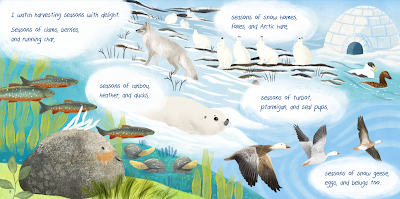Illustrated by Oliver Averill
Kids Can Press
978-1-5253-0442-2
56 pp.
Ages 8-12
May 2024
It isn't always easy to blend science with art in a meaningful way. But Amanda West Lewis has elegantly and effectively used poetry to intertwine the teaching of different poetic forms with the teaching of the solar system and all its components in her latest book, A Planet is a Poem.
 |
| From A Planet is a Poem, written by Amanda West Lewis, illus. by Oliver Averill |
 |
| From A Planet is a Poem, written by Amanda West Lewis, illus. by Oliver Averill |
But A Planet is a Poem is more than an anthology of poetry to teach forms and astronomy. It is an opportunity for young readers to become young writers themselves with Amanda West Lewis asking them to look within, and to the stars and planets, to write their own poems and investigate space.
The content of poetry and astronomy is thorough and will surely become an exceptional teaching resource for both areas of study. But beyond content is the art of the writing, particularly in Amanda West Lewis's poems. Take, for example, the concrete poem for Jupiter, "Jupiter the Giant," that includes this reference to its Great Red Spot.
The Giant Red SpotIs Shrinking,Tearing Off, Vanishing,Into Spinning Clouds.
 |
| From A Planet is a Poem, written by Amanda West Lewis, illus. by Oliver Averill |
I pity the library technicians who will need to decide whether to catalogue A Planet is a Poem as a picture book (E), as a book about writing poetry (808.1), as Canadian poetry (819.11) or about the science of astronomy (520). It's a book that can be enjoyed from different perspectives and as a resource for teaching and learning across both science and language. Regardless of where it finds its shelf, A Planet is a Poem is as expansive and substantial as the premise upon which it is based, and sure to be checked out by both young readers and their teachers.





























